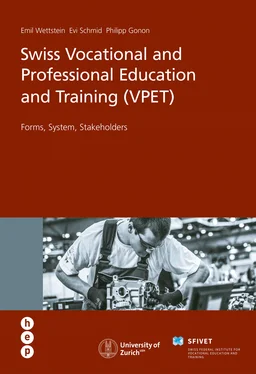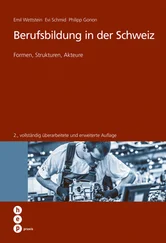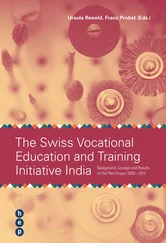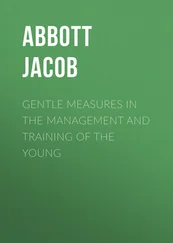The branch courses in this occupation comprise only two days per apprenticeship year, school one day a week (40 days or 360 lessons per year). Very good learners can attend general education courses in preparation for the Federal Vocational Baccalaureate Examination on a second day (cf. the portrait of Lukas Signer, p. 48).
To encourage reflection about their own learning and also as a means of assuring the quality of the training, the learners – like in nearly all apprenticeship occupations – have to keep a “training logbook” (Lerndokumentation), developed by the Ausbildungszentrum für die Schweizer Fleischwirtschaft ABZ (Training Centre for the Swiss Meat Industry, www.abzspiez.ch) in Spiez which, on behalf of the trade association, the Schweizer Fleisch-Fachverband SFF (Swiss Meat Association), promotes initial and continuing training in many different ways.
The training teaches specialist competences (meat production and animal welfare, processing, applied mathematics, hygiene, occupational safety, etc.) and – like all modern VET programmes – also promotes methodological, social and personal competences which are set out in detail in the “training plan” (Bildungsplan).
Very good learners can attend a special support course which is also offered at the training centre in Spiez. Candidates for national and international competitions are selected from the participants.
A lot of importance is attached to continuing education and training: Figure 1-1 shows the diversity and scope of the continuing education and training programme in this very traditional yet modern profession.
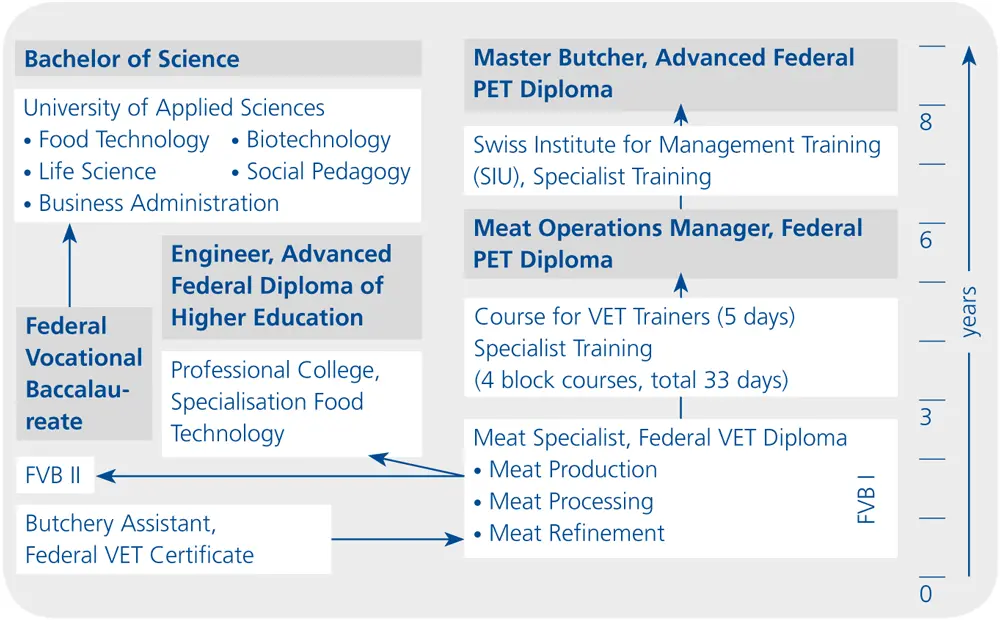
Figure 1-1: VET and CET in the meat industry. Diagram by the authors, based on documents by ABZ Spiez
Meat specialists are not only trained in commercially oriented small businesses but also in industrial meat processing firms. In some occupational fields, the apprenticeship occupations differ depending on the company form, however. For the production of baked goods, for example, training is conducted in SMEs for Baker-Pâtissier-Confectioner, Federal VET Diploma (Bäcker-Konditor-Confiseur/in EFZ), while in large bakeries Food Processing Technicians, Federal VET Diploma (Lebensmitteltechnologen/Lebensmitteltechnologinnen EFZ) with a specialisation in baked goods are trained.
In some occupations and/or regions, vocational school classes are not distributed over 40 weeks per year but are organised in blocks, for example in the case of millers: only 20 learners begin this training programme each year, their vocational school teaching is provided in the Berufsbildungszentrum Uzwil (Uzwil Vocational Training Centre) because the company Bühler AG, the leading international producer of milling machines, runs a training centre in Uzwil. This allows for synergies but means that many learners have to travel a long way. This is why teaching is done in block courses lasting two to three weeks. During this period, some learners are accommodated at the learning location in a boarding home or with host families.
In agriculture, VET was divided into two parts for a long time: in the first and second year of apprenticeship, the young people were mainly given practical training and attended vocational school for only 240 lessons per year. In the third apprenticeship year, they were taught more theoretical aspects in the form of agricultural winter schools or all-year schools. When the training became subject to the Federal Vocational and Professional Education and Training Act (Berufsbildungsgesetz) (cf. Chapter 2.4.3, p. 131), it was brought into line with apprenticeships in other fields. Since 2008, it has been a three-year training programme with eight days of branch courses and 360 vocational school lessons in each of the first two years, taught in blocks or on a daily basis. In the third apprenticeship year, teaching comprises 880 lessons and is sometimes in block form. The host company is often changed once or twice during the VET programme.
Learners in occupations of the hotel, restaurant and catering branch who are trained in a health resort with seasonal business attend vocational school classes and branch courses in one of the five hotel schools of the trade association hotelleriesuisse, for example in the Regina hotel school in Interlaken. Teaching takes place twice per apprenticeship year in a five-week intercantonal school course each time. During the courses, the learners are accommodated in the hotel school.
Some businesses cannot or do not want to provide training in all qualifications which are envisaged or required for an apprenticeship occupation. They can join forces in “host company networks” (Lehrbetriebsverbünde). This is also the solution for very small businesses which do not have enough work for learners.
There are two different forms here:
•A host company which itself cannot provide the full range of work-based training finds a partner firm where the learners can learn and work for several weeks or months (“supplementary training” (Ergänzungsausbildung), cf. Fig. 1-2, p. 20).
•A number of firms each focus on a particular aspect of the VET programme, thus providing a joint training programme. One company is designated as the main company (Leitbetrieb) in each case. Its responsibilities include concluding the apprenticeship contract with the learner and it also represents the host company network externally (cf. Fig. 1-3, p. 20).
PORTRAIT OF NICOLE RENGGLI
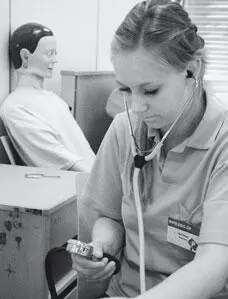
Nicole Renggli, 17,
prospective Health Care Assistant, Federal VET Diploma (Fachfrau Gesundheit EFZ), takes part in a branch course
clear
The middle of the three learning locations
Sensing how a patient feels, finding out how work is done in other institutions – prospective health care assistants can experience this in the branch course. Nicole Renggli is one of them.
Mr Traber is 65 years old. He has suffered from chronic polyarthritis for many years, and now he has also had a fall. He has broken his right ankle, two ribs and his right forearm. In Flavia’s enactment, he moans and keeps the staff on their toes: “Can it not go a bit faster, have you ever been in pain!” Enactment? That’s right: we are in the training centre of the Zentralschweizer Interessengemeinschaft Gesundheitsberufe ZIGG (the professional organisation of health care professions of the cantons in central Switzerland) in Alpnach Dorf and are witnessing role playing. Prospective health care assistants are enacting a “postoperative situation” and documenting it with a movie camera.
Scenes like this are part of the didactic repertoire of branch courses (überbetriebliche Kurse, üK) in the health care sector. Here, 70 per cent of the learning time consists of exercises or group projects, the rest is used for silent reading and lectures. The training centre in Alpnach Dorf – a new building in the industrial area – is equipped accordingly: in the classrooms, there are beds behind the desks, a materials store contains around 700 care items. Measuring vital signs, gait training, pressure-relieving positioning – Module 6, with which the learners are currently occupied, offers countless opportunities for practising. Nicole Renggli, one of the learners, thinks this is great. First of all, the exercises offer the opportunity to carefully try out procedures and discuss questions. And secondly, in the role of the patient, the students learn how care work feels. In the case of Mr Traber, aka Flavia, the change of perspective had a downright cathartic effect. “You were really nasty,” said one of her colleagues after the role play. Flavia replied: “My patients are too sometimes.”
Читать дальше
